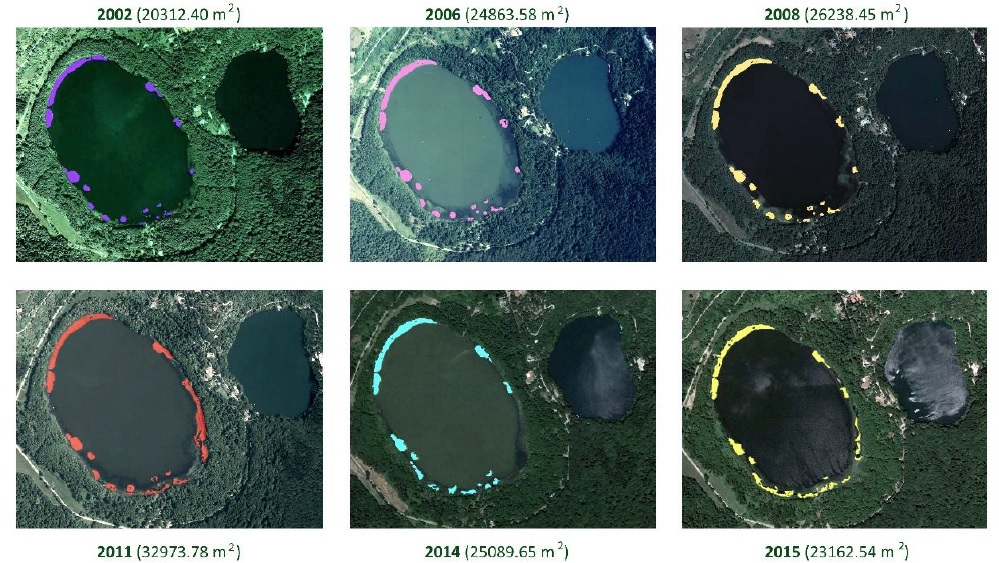Lago Grande in Monticchio Area (Southern Italy): Integrating Multitemporal Airborne Images, Satellite Images (Sentinel-2) and Historical Data to Assess the Extent of Nymphaea Alba l and Taxodium Distichum (l.) Rich in Natural Habitats of Directive 92/43/EEC
Keywords:
Biological invasions, Multitemporal historical data, Sentinel-2, K-means clustering, Monticchio lakesAbstract
Lago Grande and Lago Piccolo are famous species of Monticchio (Monticchio Lakes) that lie in the collapsed caldera of the volcanic structure of Mt. Vulture (Southern Italy). The entire lake area is the part of the "Monte Vulture" Special Area of Conservation (SAC IT9210210, site code in Natura2000 Network). The main purpose of this research was to verify the expansion of these two species in Lago Grande of Monticchio: Nymphaea alba L., in the Habitat 3150, and Taxodium distichum (L.) which is rich in the Habitat 91E0* (Habitat codes in Directive 92/43/EEC). Multitemporal analysis of aerial Red-Green-Blue (RGB) photographs were acquired for the years 2002 to 2015 to identify a continuous increase of the laminate of N. alba. The evolution of T. distichum which has been analyzed using multi-temporal images, documents and Sentinel-2 remotely sensed datasets. In first, the N.alba population was observed with increasing its span upto 30 percent of the lake area. In 2011, it occurred emissary obstruction. From this year, the specie population was declines up to 24 percent of the lake area. The large surface area occupied by the laminate can bring about to a considerable reduction of the characteristic species of Habitat 3150. In 2017, T. distichum has expanded over an area of 8047 square meters. The evolution of this species reveals the risk of habitat 91E0*reduction with consequences on the population of the moth Brahmaea (Acanthobrahmaea) europaea Hartig and an Italian endemic species with an exceedingly restricted distribution. The working methodology is based upon combination of different informative source (satellite images, multitemporal airborne images and historical datasets) to identifying vegetation dynamics occurred in hydrophytic vegetation, wetlands and riparian habitat of Lago Grande of Monticchio.


















